What are Microtransactions?
Microtransactions are in-game purchases that unlock specific features or gives the user special abilities, characters or content. The purchases are virtual. The cost of these transactions can range from $0.99 to $99 (possibly even more).
I’m going to avoid discussing the ethics of microtransactions because everyone knows they exploit people, particularly young children. Other people may have different opinions though.
Types of Microtransactions
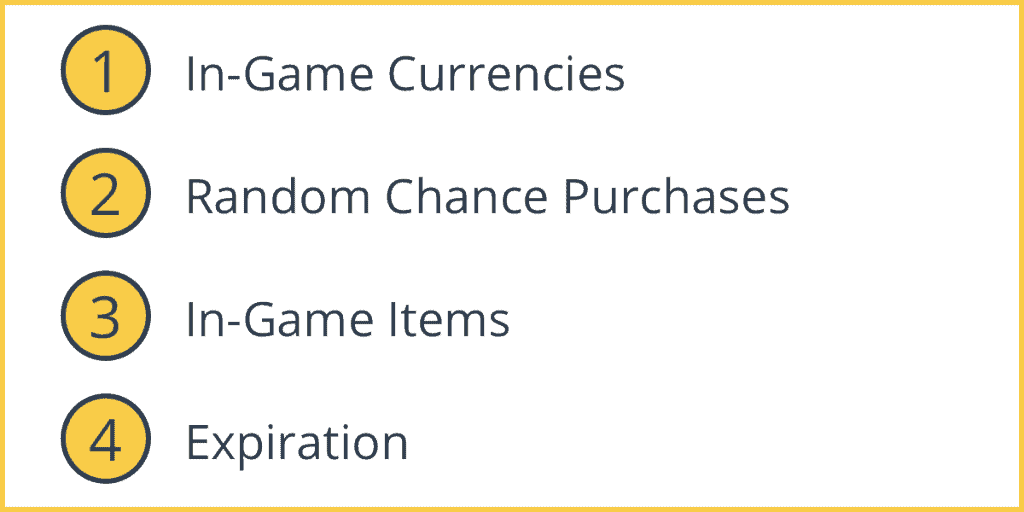
Tuoro University has compiled a list of four types of microtransactions:
1. In-Game Currencies
The game uses a fake in-game currency that players can redeem. Games use these exchanges to hide the real value of what players may purchase and to make more substantial quantities seem like the “better deal.”
2. Random Chance Purchases
These may be known as loot crates or bags, packs in different games. Players don’t know what’s in the box but are tempted to unlock something special. Games may also offer “deals” that make these packs appear to be at a discount.
3. In-Game Items
These in-game purchases allow purchasers to have an advantage in the game. For example, World of Warcraft offers in-game purchases like pets and mounts.
4. Expiration
Similar to arcade games that had a time limit, expiration is used to encourage you to purchase to continue playing.
The History of Microtransactions
The recent news of Electronic Arts’ Star Wars Battlefront II video game revisited the controversial business model in the video game industry called microtransactions. The controversy erupted when u/MBMMaverick on Reddit reported that he had to spend $80 to unlock Darth Vader. EA’s response to that thread didn’t do them any favors. They suggested the system was designed to “provide players with a sense of pride and accomplishment for unlocking different heroes.”
EA introduced a “loot box” system in the game, which encourages gamers to spend real money on the game to unlock particular fan favorites like Darth Vader or Luke Skywalker or other in-game rewards. Keep in mind, that these games already retail for $60 to $80 on Amazon. Traditionally, such games allow you to play and complete the game entirely without spending any more money.
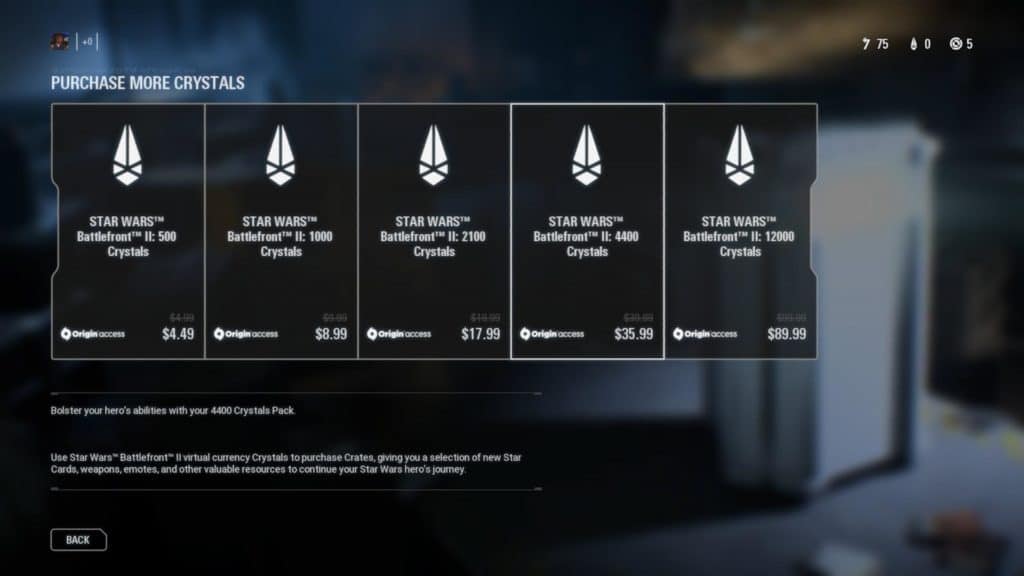
Of course, EA tried to brush this off by saying that you didn’t have to spend money to unlock these rewards, you could do so by playing the game and grinding away. Redditors compiled a spreadsheet of how long certain things would take, and it’s mind-blowing that EA thinks people would spend 40 hours to unlock a single popular character. They designed the game for people to spend money.
EA has since removed in-game purchases from Battlefront II, but I suspect this monetization strategy is far from over. I expect the future of in-game monetization to be more subtle to avoid controversy.
Microtransactions aren’t new at all. They’ve been around for years now, becoming mainstream in the form of freemium games, like the insanely popular smartphone game Clash of Clans. While that’s a more recent example, microtransactions have been around since at least 2010. MySpace was still a thing in 2010!
Note: Some people suggest that coin-operated arcade games are a form of microtransaction. Like asking you to insert more coins to continue to play or get a new life. I don’t think those games were intentionally designed like that, at least not like the games today.
Do you remember that annoying farming game all your friends played on Facebook? They had in-game purchases too. Adweek estimates that Farmville was pulling in $150M a year back in 2010.
The boom of the smartphone, especially the iPhone, allowed for the first time, anyone to develop video games for cheap. Suddenly anyone could become a developer and sell a game on the App Store.
Previously video games were expensive; most console or PC games retailed for $30-60 per game. However, with the advent of the smartphone, now you had access to a massive selection of games. They ranged from”purely free” (ad supported), freemium (with microtransactions) to premium games. Most of the initial premium games on the App Store retailed for a couple of dollars at most. Back then, that was considered a lot of money to spend on an app. Look at this chart of how big the App Store has grown over the decade.
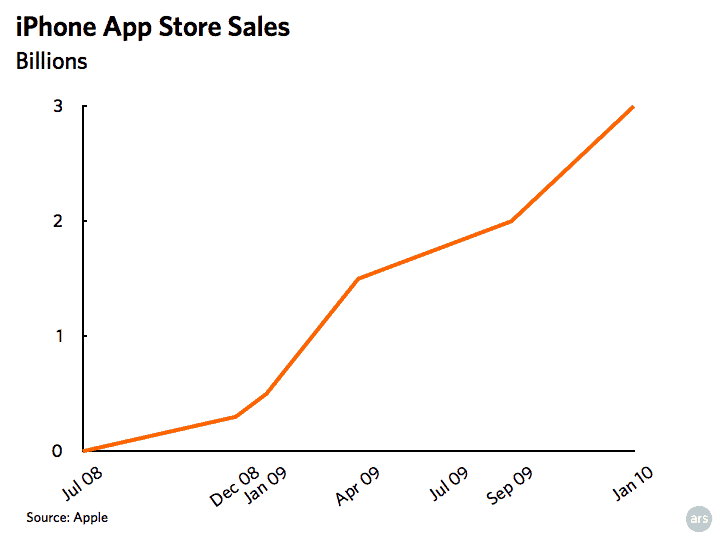
A New Business Model
The hesitancy from consumers to spend money in the App Store resulted in a shift in monetization. Indie developers and studios knew they couldn’t charge the same kind of money that EA did for an app, but how could they get people to pay?
The solution was microtransactions!
People loved freemium games – you’d tell yourself, “it’s free, I’m not going to buy anything. Only an idiot would spend $99 on 14000 gems in Clash of Clans.”
When you read that the creators of Clash of Clans made $2.3 BILLION in 2016, you might think the world is full of idiots. But that’s not true. These games and microtransactions have evolved into a model that closely resembles gambling.
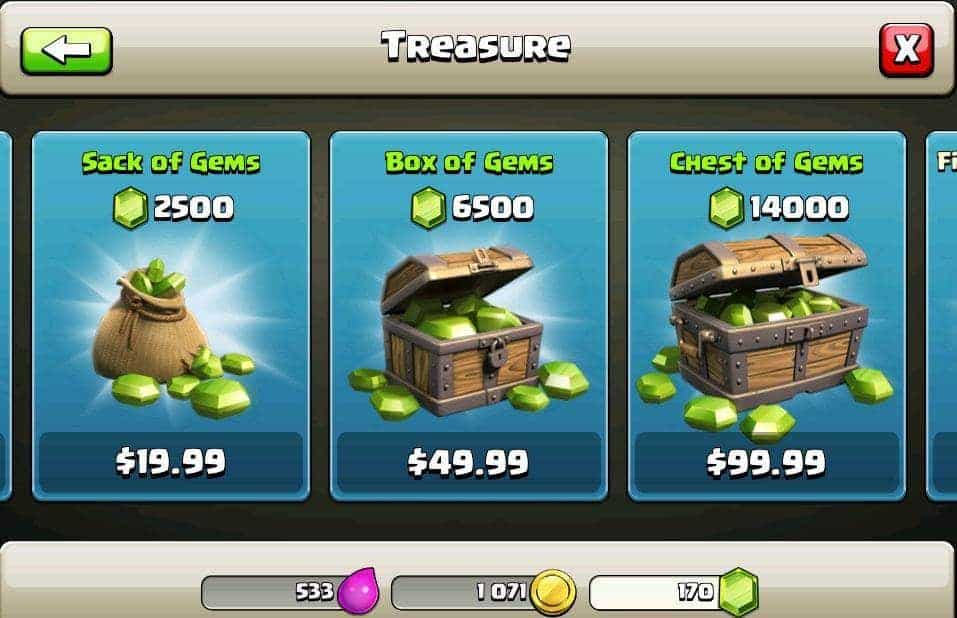
The Economics of Microtransactions
Today, some games practically require users to complete microtransactions to complete a game. When developers take this approach to designing gameplay, they no longer care about the in-game experience or the user finishing the game. It’s about trying to make the game “challenging” (i.e., frustrating) enough but rewarding. The whole emphasis is based on balancing satisfaction of making progress, but just not enough, so the user has to purchase to proceed.
Eira Ekre sums this up perfectly,
Game studios are now purposefully designing bad systems and mechanics, hoping that people will be willing to pay to get past the poorly-made parts of the service: when microtransactions are the sole source of income, we start to build our entire product around that model.
Eira Ekre
The Economics of Video Games
I think it’s safe to generalize that in the early days, most of the large game studios ignored microtransactions. So how did we end up with big game publishers like EA and Activision-Blizzard trying to double-dip?
To understand the phenomenon, we should take a look at the economics of creating a video game. As Paste Magazine pointed out, the economics of making a video game is brutal. Creating a blockbuster game is not cheap, and games quickly lose popularity and become discounted as new games are churned out.
Shadow of War will cost you $60 today, on its day of release, but if it follows the general trend of the business it’ll be widely available for $40 by Thanksgiving. By the end of the year it’ll be going for half of its original sticker price, and at some point in the first half of 2018 it’ll be marked down permanently to $20. With such a short tail to turn a profit off a massively budgeted game, it only makes sense to look for ways to continually generate income, even if it’s explicitly not in the best interests of the consumer.
Of course, if the economics don’t support such a business model then the publishers are only fooling themselves and alienating their fan base at the same time.
Sadly, because of the way incentives are set up, all these publicly traded game publishers only care about the next quarter results. It’s all about making more money to appease shareholders. This obsession with accumulating more wealth has also resulted in a lot of consolidation in the video game industry.
Tech mergers and acquisitions advisor Digi-Capital, in its Games Report 2017, stated that there was M&A activity worth $28.4 billion of game companies. This record activity is a 77% increase since the previous record set in 2014.
The In-Game Economy
Studios and developers know that only 0.15 percent of mobile gamers account for 50 percent of all in-game revenue, so they model the entire in-game economy to capture the 0.15% of players (also called whales). Additionally, a survey by W3i found that “47 percent of total revenue comes from purchases costing $9.99 to $19.99” while only 6% of revenue comes from purchases ranging from $0.99 to $1.99.
From these two surveys, we can assume that while only a small percentage of people complete microtransactions, when they do, they spend a significant amount of money.
Premium Games with In-Game Purchases
The FIFA series is a serious cash cow for EA. Sure, the game improves slightly year over year, and they update the roster, but it’s pretty much the same thing.
FIFA is a huge franchise for EA; it accounts for nearly 40% of EA’s revenue. According to a Forbes article, the company sold 15.5 million units of the 2016 version. At a very conservative retail price of $30 (usually starts at $60), the game brought in $450 million in revenue. That amount is distributed amongst retailers, distributors and various license holders, but I’m sure EA took a sizable chunk. If that wasn’t enough, EA also generates $650 million from the Ultimate Team feature in the game.
With the FIFA series churning out so much cash year after year, we can safely assume microtransactions are here to stay.
Psychological Tricks Used in Microtransactions

What psychological tricks do developers deploy to encourage purchases?
There are probably more tricks than I’m going to be able to cover. Ramin Shokrizade writes extensively on Game Economics at Gamasutra. I’ve based these psychological tricks on Ramin’s fascinating post The Top F2P Monetization Tricks.
1. In-Game Currency
Developers create an in-game currency to form a layer between the user and the purchases. This layer makes it harder for the user to assess the value of the currency, especially in stressful situations. Some games add more complexity by using “weird” exchange rates than a 1:1 exchange rate.
For example, let’s say it would cost you $7.99 to buy 60 Gems. Then you would have to spend 13 Gems to unlock a Lollypop that gives you an extra move in the game. Do you know how much you just spent on that Lollypop? Probably not and they intentionally use such numbers to disguise the value.
2. Random Chance Purchases or Loot Boxes
Developers use a psychological principle called “variable rate reinforcement.” The dopamine system enjoys unpredictable rewards. “the dopamine system responds more to an uncertain reward than the same reward delivered on a predictable basis.” Video games excel at reinforcing users that they will be rewarded through progression.
PC Gamer explained this phenomenon using Overwatch as an example.
Overwatch has a progression bar system for loot boxes, which means users anticipate the next drop. Each loot box has something called “weapon skin.” Overwatch then allows you to sell your weapon skin for the in-game currency. The in-game currency gives you access to the more premium loot boxes (Superior and Enhanced Battlepacks) which have a higher chance of containing premium weapon skins. You’re taught to keep trying to get the premium loot boxes, eventually making you take out your credit card.
Now to the audio-visual design of loot boxes.
The opening of loot boxes builds up anticipation. There are lots of colors and audio cues to make you feel excited. You begin to believe that your loot box could have that rare item.
Pokemon Go similarly uses this technique with the egg hatch. The egg cracks open slowly and then there’s a bright light and fireworks before you finally see the Pokemon.
3. Fun Pain
Similar to the expiration microtransaction, this tactic puts the user in a stressful situation and offers them a way to try again or a way to advance. This experience is called “Fun Pain.” Candy Crush used this trick to get people to buy extra moves. Once you run out of moves, you’ve technically lost, but there’s a popup that tells you that you can use one Lollypop to get three extra turns.
Loss aversion also plays an important role here, especially if you’re only one or two steps away from winning. It’s the “tendency to prefer avoiding losses to acquiring equivalent gains: it’s better not to lose $5 than to find $5.”
4. Offer “Discounts”
Another trick used in conjunction with layering is offering bigger packages at a discounted rate. The discount makes the consumer feel they can buy more and save more. The developers reinforce this by adding text to emphasize the savings and which package is the best value (hint: it’s the most expensive one).

5. Skill Games
Games like Candy Crush Saga are considered skill games and users can progress without having to spend any money. The game becomes harder as you progress, which also means users feel more rewarded. On the other hand, money games require you to spend money to keep progressing. Ramin from Gamasutra suggests that this shift eventually occurs in Candy Crush Saga, and users believe they can advance but sometimes need to purchase a little help.
6. Reward Removal
This technique involves giving the user a significant reward and then threatening to take it away if you don’t make a purchase. Research shows that we value the reward more if we are to lose it than we initially appreciated it if we were to buy it.
The Future of Microtransactions
EA may have backpedaled because of the Battlefront II incident, but since Star Wars is a massive franchise, it got an unusual amount of attention. In reality, there are probably tons of other games doing this or worse without the same kind of spotlight.
I don’t see microtransactions going away or Apple regulating them in any way. Don’t expect help from Google or Apple; they want you to spend money and process transactions through their store! Publishers can always argue that people have a choice to make in-game purchases or not. I can only imagine this trend becoming worse in the future.
Kotaku recently published an article that described a patent that Activision had filed to encourage to buy microtransactions. The gameplay would use computer algorithms to “match players together in order to increase the likelihood of microtransaction purchases.”
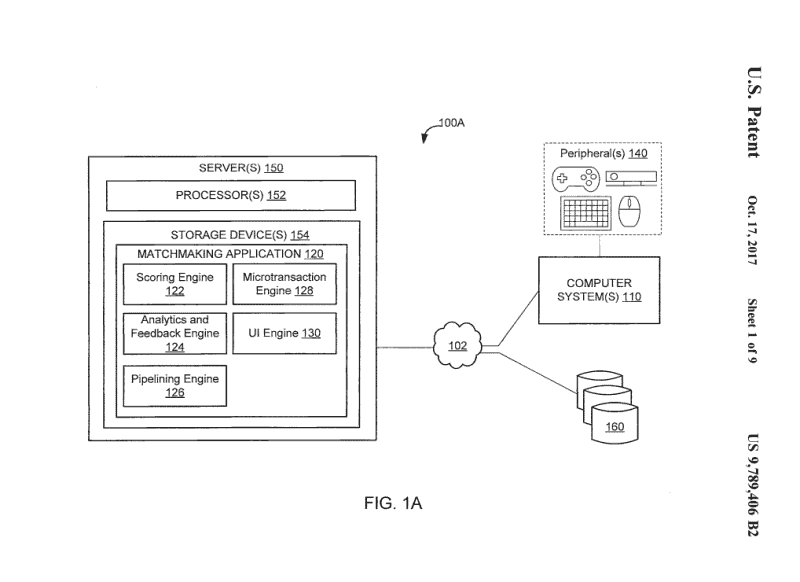
With advancements in machine learning and artificial intelligence, it may become possible that one day publishers can tailor in-game purchases. Like customizing microtransactions to your gaming abilities and price sensitivity to encourage more spending.


A solid summation of the current state of video games and the predatory practices being used to milk customers for every drop. Appreciate all the referential linkage as well…top notch! Subscribed.